Balancing Therapy Intensity And Family Life With In-Home ABA

Understanding the Intersection of ABA Therapy and Family Life
Applied Behavior Analysis (ABA) therapy is a cornerstone intervention for children with autism, aimed at fostering essential life skills and improving behaviors through structured, evidence-based methods. However, the intensity of therapy required to achieve substantial gains must be carefully balanced with the realities of family routines, schedules, and wellbeing. This article explores how in-home ABA therapy models can provide a flexible, personalized approach that integrates therapeutic goals into daily family life, ensuring sustained progress without overwhelming the household.
Foundations of ABA Therapy: Principles and Providers
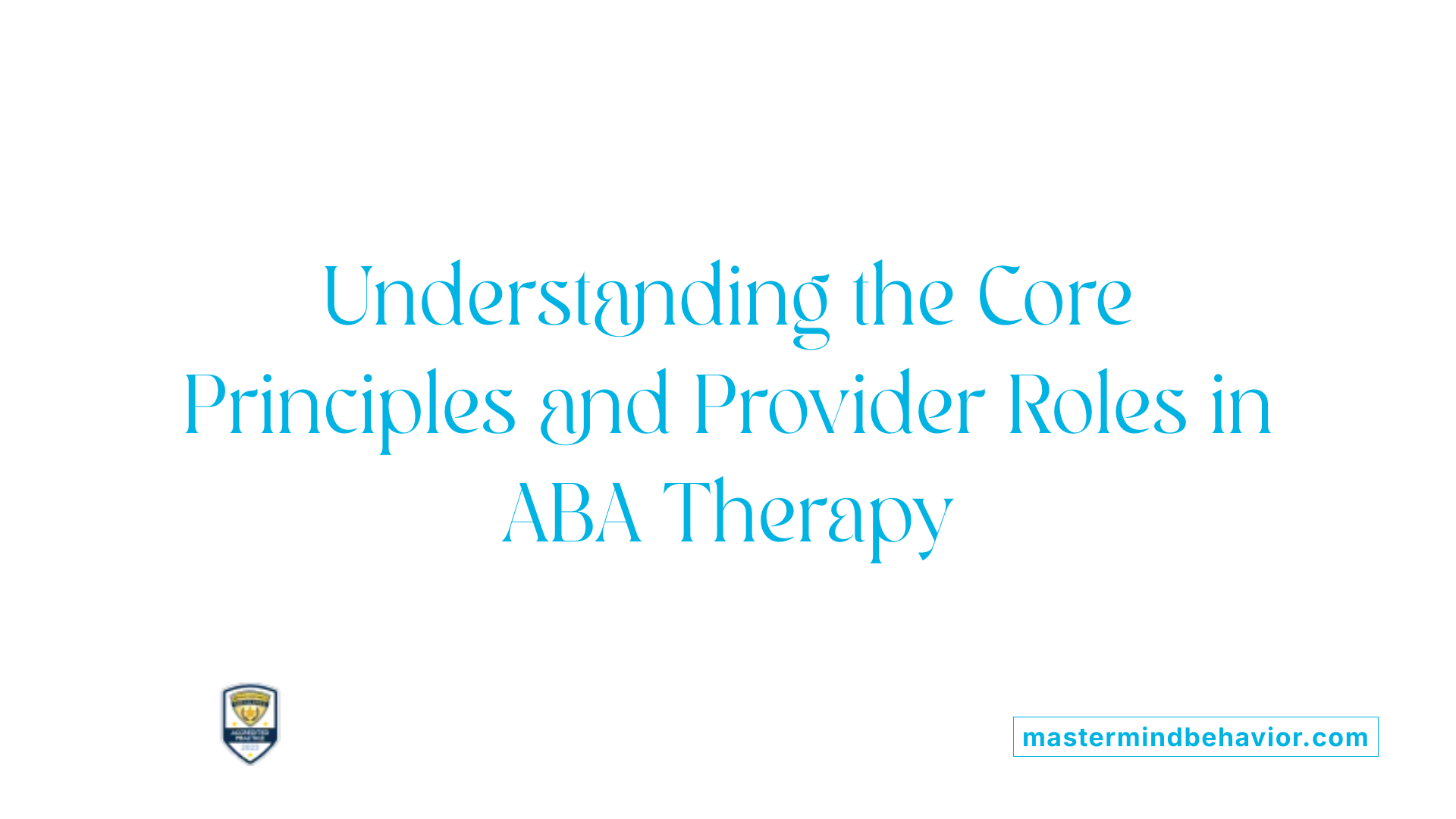
What is Applied Behavior Analysis (ABA) therapy, and how is it used in treating autism?
Applied Behavior Analysis (ABA) therapy is a scientifically supported approach that focuses on improving social, communication, and daily living skills in individuals with autism. It uses a learning-based approach to understand and modify behaviors by analyzing the antecedents, behaviors, and consequences (the A-B-C model). Through personalized intervention plans and techniques such as positive reinforcement, ABA encourages desirable behaviors and decreases challenging ones. Therapy sessions are typically structured and overseen by trained professionals like Board Certified Behavior Analysts (BCBAs), and may be delivered in home, school, or clinic settings to meet individual needs.
What are the core principles behind ABA therapy?
ABA therapy is grounded in principles of behavior and learning science. It emphasizes that behaviors are influenced by environmental factors and can be changed through reinforcement strategies. Positive reinforcement—rewarding desired behaviors—is central to skill development. Techniques like task analysis, prompting, fading, and chaining help teach complex behaviors step-by-step. Data collection and ongoing progress monitoring allow therapists to adapt plans effectively. The goal is to develop functional skills, reduce problematic behaviors, and help generalize learning to everyday situations.
Who typically provides ABA therapy for individuals with autism?
ABA therapy is provided mainly by licensed professionals trained in behavior analysis, such as BCBAs and Licensed Behavior Analysts (LBAs). These experts design and oversee individualized treatment programs based on thorough assessments. Trained therapists and paraprofessionals usually implement the daily therapeutic activities under supervision. Services can be delivered in various environments including homes, clinics, and schools, often involving family members to enhance learning generalization. Various specialized organizations ensure access to ABA therapy across multiple locations.
Integrating ABA into Family Life: The Benefits of In-Home Therapy
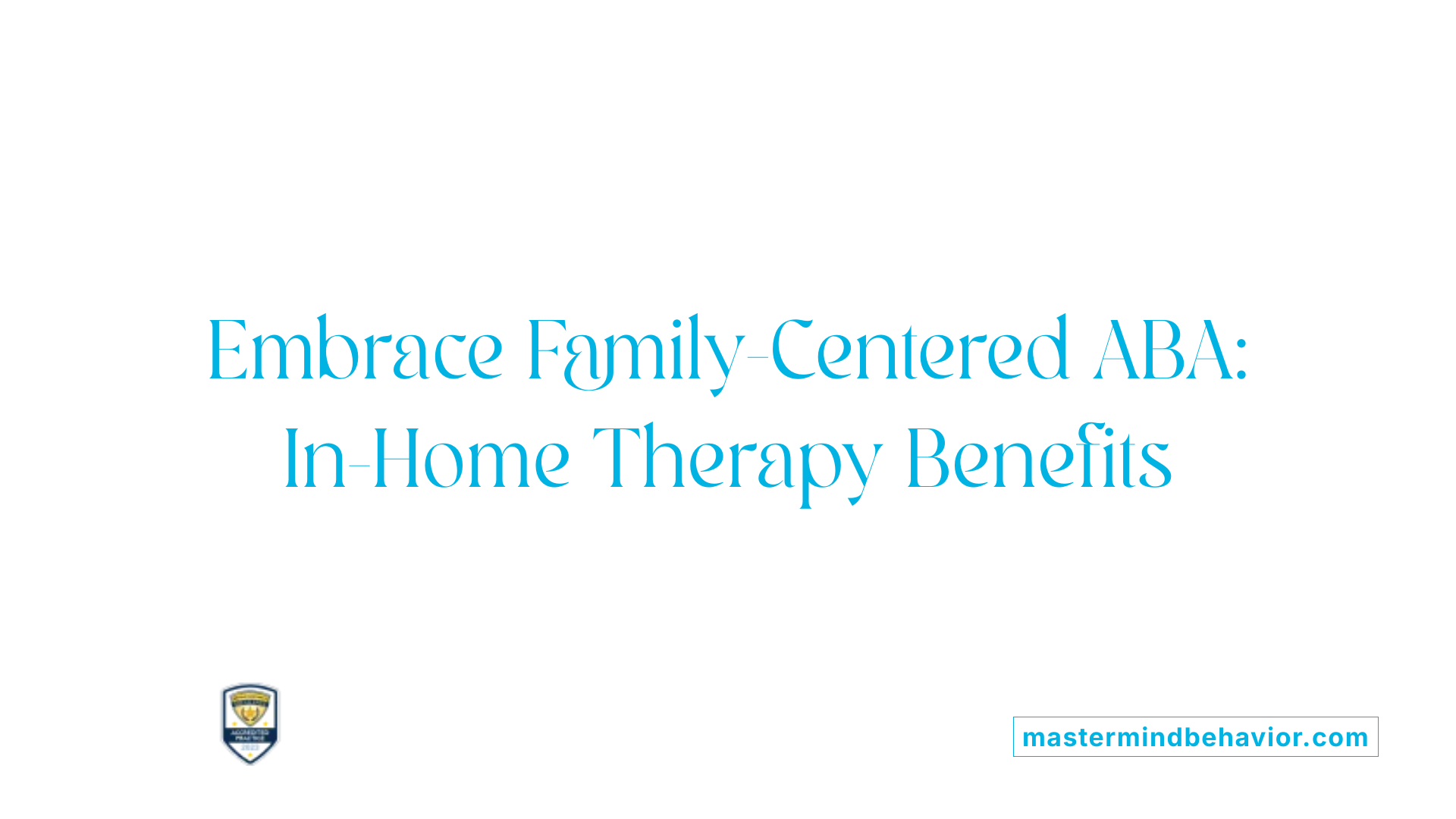
What are the Advantages of In-home ABA Therapy?
In-home ABA therapy offers a personalized approach by delivering treatment directly within the child’s natural environment. This setting allows therapists to tailor strategies specifically to the unique dynamics of each family. It promotes real-life application of skills during everyday activities, which supports better generalization and reinforcement of learning.
Benefits include a flexible schedule that aligns with the family’s routines and needs, reducing conflicts and stress. Home-based therapy also facilitates close collaboration between clinicians and parents, enhancing consistency and effectiveness in intervention.
How Does In-home Therapy Integrate with Family Routines?
One of the greatest strengths of in-home ABA therapy is its seamless integration into natural family routines such as mealtimes, play, and daily chores. This approach uses everyday situations as learning opportunities, ensuring that new skills are practiced in meaningful contexts.
By embedding therapy into regular activities, children learn to apply behaviors spontaneously, which helps with long-term development. The home environment also provides a safe and stimulating backdrop conducive to social and communication skill-building.
What Role Does Parental Involvement Play?
Parental involvement is critical in making in-home ABA therapy successful. Caregivers act as reinforcement agents and participate in implementing techniques throughout daily routines. This partnership strengthens the therapy’s impact and promotes consistency outside sessions.
Parents are encouraged to communicate regularly with therapists, track progress, and receive guidance on managing behaviors. Empowering families with knowledge and skills fosters confidence and enhances therapeutic outcomes.
How Does In-home Therapy Offer Scheduling Flexibility?
In-home ABA allows for various flexible scheduling models, from steady weekly hours to hybrid approaches mixing home and other settings. This adaptability accommodates the family’s daily life, preventing burnout and supporting sustainable progress.
Therapy hours can be adjusted based on the child's evolving needs and family preferences, ensuring balance and quality. Such flexibility helps maintain a positive environment, encouraging the child's motivation and well-being.
Scheduling ABA Therapy: Tailoring Intensity Without Overwhelm
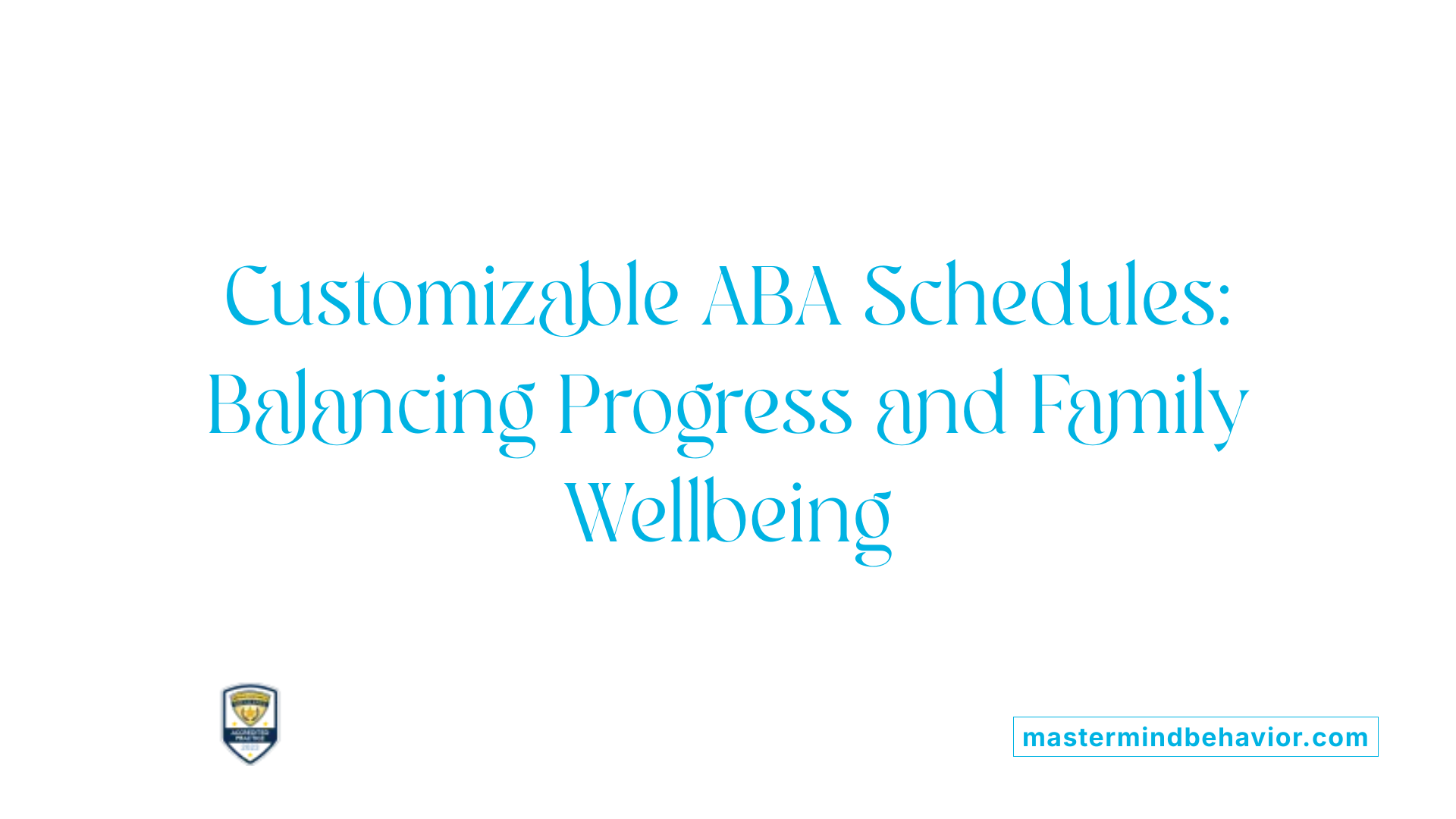
What are the therapy intensity and duration standards?
ABA therapy intensity is commonly measured by hours per week, with recommendations ranging from 10 to 40 hours depending on the child's age and needs. Intensive programs often involve 36 or more hours weekly over at least two years to maximize developmental gains, especially when started early between ages 2 to 5. Such schedules may include daily therapy blocks of 3 to 5 hours to provide sustained learning opportunities.
How do flexible scheduling models work to support families?
Families can benefit from adjustable scheduling models including:
- Steady hours: Distributing therapy evenly weekly for consistency.
- Front-loading hours: Concentrating more hours upfront, then tapering off.
- Hybrid models: Combining in-person center sessions with at-home or school-based therapy.
These approaches allow tailoring to family routines and logistical needs, fostering better adherence without overwhelming caregivers.
How can therapy hours be balanced with family routine while preventing burnout?
Balancing therapy hours means considering both the child's individual requirements and the family's daily life. Moderating intensity to emphasize quality over quantity helps avoid fatigue. This includes respecting family schedules and setting realistic goals that integrate therapy into natural routines.
What signs indicate fatigue or overwhelm in children undergoing ABA therapy?
Monitoring the child for signs like irritability, withdrawal, decreased engagement, or increased challenging behaviors is critical. Early identification allows timely adjustments in session length or intensity, ensuring therapy remains effective without causing distress.
By combining evidence-based intensity standards with flexible scheduling and close monitoring, ABA therapy can be optimized to support meaningful progress while maintaining family wellbeing.
Personalizing ABA: Assessments and Individualized Care Plans
What is a Functional Behavior Assessment (FBA)?
A Functional Behavior Assessment (FBA) is a systematic process used in ABA therapy to identify the causes and functions of specific behaviors. It helps therapists understand why a child may exhibit certain behaviors and guides the creation of effective intervention strategies.
How do individual skill assessments fit in?
Individual skill assessments evaluate a child's current abilities across areas such as communication, social skills, and daily living tasks. These assessments provide a clear picture of strengths and challenges, helping prioritize which skills to target in therapy.
How are care plans developed collaboratively?
Therapists work closely with families and other clinical team members to develop personalized care plans. This collaboration ensures that therapy goals align with the child's needs and family routines, promoting consistent and meaningful progress.
Why are tailored interventions important?
Tailored interventions recognize that each child is unique. By customizing therapy to the child's specific behavior patterns and skill levels, ABA therapy can be more effective. This personalized approach supports better outcomes, enhances skill generalization, and reduces stress for both the child and family.
Data-Driven Progress: Monitoring and Adjusting ABA Interventions
Role of data collection and analysis in ABA
Data collection is fundamental in Applied Behavior Analysis therapy. Therapists gather detailed information during each session to measure how well a child is acquiring new skills and reducing unwanted behaviors. This ongoing data analysis ensures that treatment is adaptive and evidence-based.
Tracking skill acquisition and behavior change
Specific behaviors and skills are monitored through systematic recording methods. Therapists document improvements in communication, social interactions, and daily living skills, as well as any behavioral challenges. This tracking helps identify which interventions are working and which may need refinement.
Using data to adjust therapy intensity and methods
By analyzing collected data, clinical teams can decide whether to modify therapy intensity—such as increasing or reducing weekly hours—or change techniques to better suit the child’s evolving needs. This flexibility helps avoid therapy burnout and promotes steady progress.
Collaborative review between families and clinical teams
Regular communication between families and therapists is essential for interpreting progress data. Collaborative reviews allow parents to share observations from daily routines, while clinicians provide insights on clinical assessments. Together, they adjust goals and strategies to ensure the therapy remains family-centered and effective.
Supporting Families: Strategies to Maintain Balance and Reduce Stress
Setting Realistic Therapy Goals
Setting achievable and clear therapy goals helps families manage expectations and reduce feelings of overwhelm. Tailoring goals to the child's current capabilities and family routines supports steady progress without burnout.
Practicing Self-Care for Caregivers
Caregivers should prioritize their own well-being by taking breaks and engaging in activities they enjoy. Self-care is essential to maintain the energy and patience necessary to support the child effectively.
Involving Siblings in Therapy Activities
Including siblings in ABA activities encourages teamwork and enriches the child's social environment. This involvement also helps siblings feel included and fosters supportive family dynamics.
Celebrating Milestones and Progress
Recognizing and celebrating small and large achievements motivates the entire family. Positive reinforcement for progress boosts morale and encourages continued engagement in therapy.
Community Support and Parent Networks
Participating in local parent groups and community networks offers emotional support and shared experiences. Families in Greensboro, NC, benefit from these connections, gaining additional resources and encouragement while managing autism therapies.
Challenges of In-Home ABA and Practical Solutions
Maintaining consistency and structure
One of the main challenges in in-home ABA therapy is maintaining a consistent and structured environment. Effective therapy requires a distraction-free space with regular routines and visual aids. Families can create designated quiet areas and work closely with therapists to develop consistent daily schedules that align with treatment goals.
Managing environmental distractions
Homes are naturally filled with potential distractions, which can interfere with therapy sessions. To address this, parents and therapists collaborate to minimize interruptions by scheduling sessions during quieter times and organizing materials to keep the child's focus. Reducing clutter in therapy areas and using visual supports helps maintain engagement.
Effective communication with clinicians
Clear and ongoing communication between caregivers and ABA professionals is critical. Families are encouraged to share progress data regularly and discuss concerns or observed changes. Collaborating through scheduled check-ins allows adjustment of therapy plans, ensuring they meet the child’s evolving needs and integrate smoothly into daily life.
Financial and insurance considerations
Navigating financial aspects and insurance coverage, such as Medicaid or private plans, is often complex. Families should seek providers experienced with billing and authorize benefits to maximize coverage. Understanding the cost structure and available resources helps reduce financial stress and maintain uninterrupted therapy.
Implementing these practical solutions supports a successful and sustainable in-home ABA experience, helping children and families achieve meaningful progress.
Early Intervention and the Importance of Therapy Timing

What is the recommended early age for starting ABA therapy?
ABA therapy is most effective when started early, ideally between the ages of 2 and 5 years. Starting therapy as young as age two leverages the heightened brain plasticity of young children, making skill acquisition and behavioral improvements more achievable.
How does early intervention benefit neural plasticity?
Early intervention takes advantage of neural plasticity, the brain's ability to reorganize and adapt. This makes it easier for children with autism to develop cognitive, communication, and adaptive skills during the critical developmental window.
What are the intensity requirements for younger children?
Younger children, particularly those ages 2 to 5, often require intensive ABA therapy ranging from 25 to 40 hours per week. These sessions are typically delivered in daily blocks of 3 to 5 hours to maximize learning and reinforce positive behaviors consistently.
What are the long-term results linked to therapy duration?
Research shows that longer therapy durations, especially when started early, are associated with significant and lasting improvements in language, social skills, and motor development. Intensive programs of 36+ hours per week for at least two years produce the most meaningful outcomes.
These findings highlight the critical importance of early and intensive ABA therapy to promote optimal developmental progress for children with autism.
Holistic Development Through Combined ABA Settings
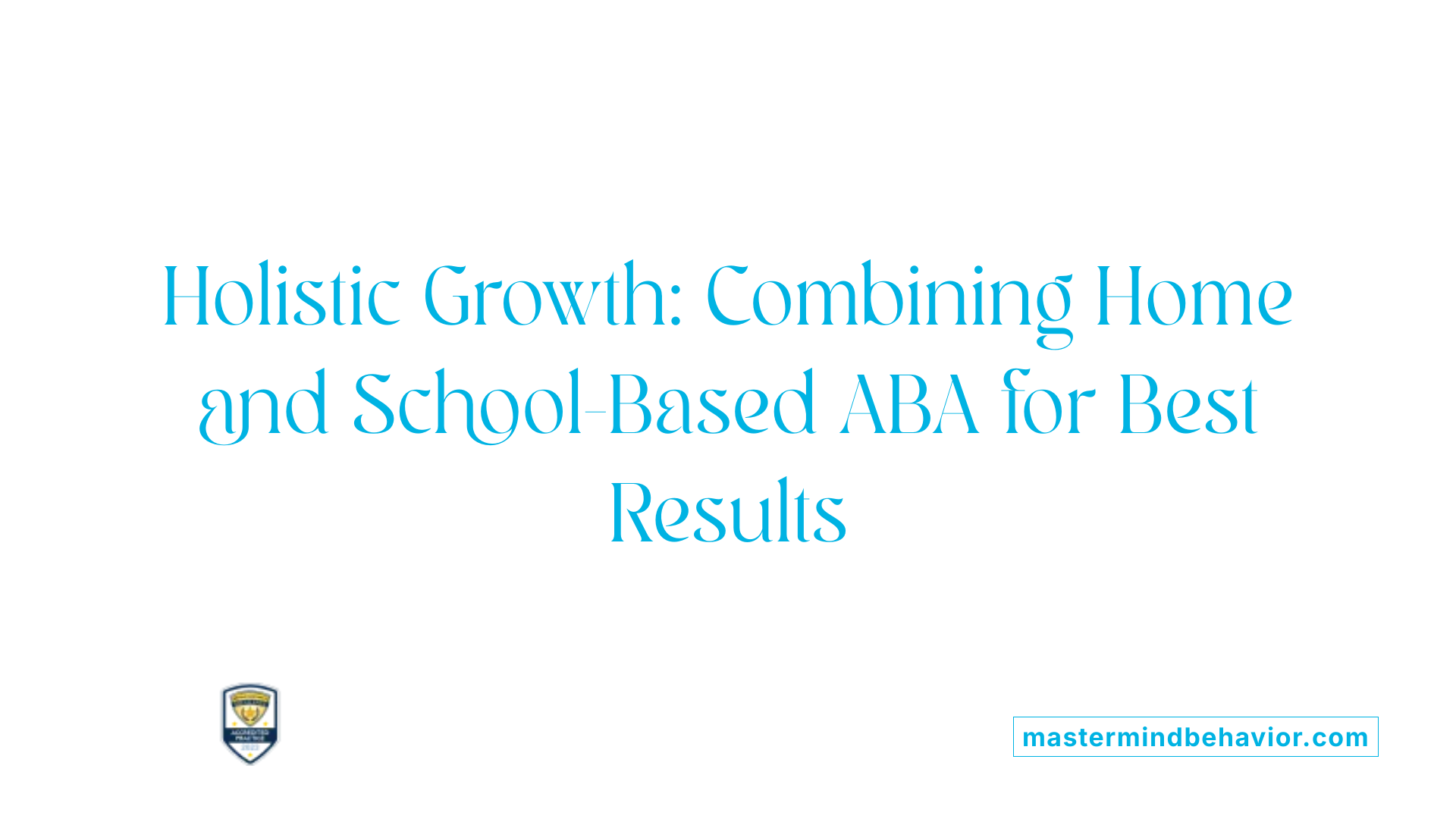
Comparison of Home-Based and Center/School-Based ABA
Home-based ABA therapy integrates skill-building into a child's everyday environment, offering personalized treatment and flexible scheduling. It allows children to practice skills naturally during routines like mealtimes and play, enhancing behavior generalization. Center or school-based ABA, on the other hand, provides a structured environment with consistent therapists and social skill practice alongside peers, fostering academic and behavioral growth within educational settings.
Benefits of Dual Support Systems
Combining home and school-based ABA therapies supports a child's development holistically, ensuring skills learned in therapy generalize across different environments. This dual system encourages collaboration between therapists, educators, and families, aligning goals and enhancing progress. Additionally, it helps reduce the logistical challenges families face by distributing therapy hours and responsibilities, making care more manageable.
Fostering Skill Generalization Across Environments
Using ABA therapy in multiple settings enables children to apply learned behaviors and communication skills in varied contexts. This approach promotes consistency and robustness in skill acquisition, preventing regression and fostering independence.
Reducing Logistics Burden with Integrated Approaches
Integrated ABA services ease scheduling demands on families by coordinating therapy sessions between home, school, and centers. This flexibility prevents caregiver burnout and optimizes therapy intensity without overwhelming the family, ultimately supporting better outcomes for the child.
Achieving a Sustainable Balance Between Therapy and Family Life
In-home ABA therapy presents a flexible, individualized option that aligns therapeutic intensity with the realities of family life, promoting not only skill development in children with autism but also family wellbeing. By embracing collaborative planning, data-driven adjustments, and flexible scheduling, families can experience significant behavioral improvements without undue stress or burnout. Integrating therapy into daily routines, involving all family members, and leveraging community supports further enhance positive outcomes. Ultimately, a thoughtful balance between therapy demands and family dynamics fosters an environment where children can thrive and families can maintain harmony, setting the foundation for long-term success and quality of life.
References
- Balancing Therapy Hours with Family Life in Center-Based ...
- Child with Autism: Balancing Family Life and Therapy
- Can ABA Therapy Be Done at Home? A Complete Guide
- Understanding ABA Therapy Duration & Progress
- Impact of Applied Behavior Analysis on Autistic Children ...
- Effects of Applied Behavior Analysis on individuals with ...
- Applied Behavior Analysis (ABA)
- The effectiveness of applied behavior analysis program ...
- Applied Behavior Analysis (ABA)
- Medicaid Applied Behavior Analysis (ABA) ...
Recent articles

Helping Children With Autism Develop Self-Help Skills At Home
Enhancing Independence Through At-Home Strategies for Children With Autism

Understanding What Is ABA: Principles Families Should Know
Unlocking the Power of ABA in Autism Support
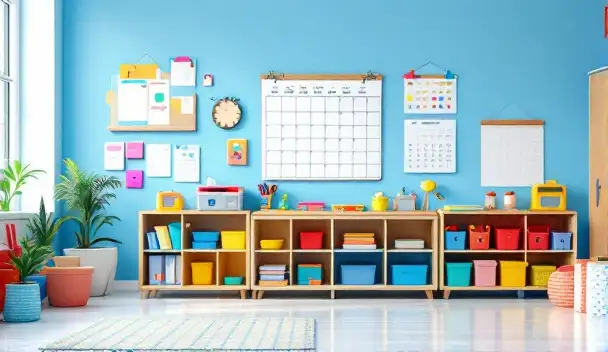
Teaching Organizational Skills Using ABA Approaches
Effective Strategies for Teaching Organization with ABA

How ABA Therapy Improves Transitions Between School Activities
Enhancing School Transitions for Students with Autism

Teaching Self-Correction Skills Through ABA Techniques
Empowering Autism Interventions with Self-Correction Skills

How ABA Supports Social Communication In Group Settings
Enhancing Social Skills Through Evidence-Based Interventions



